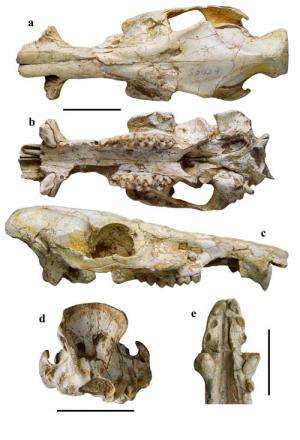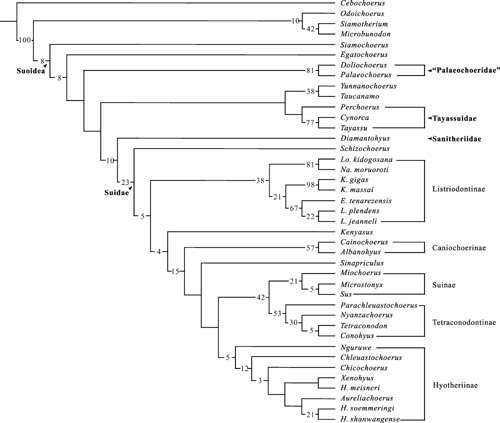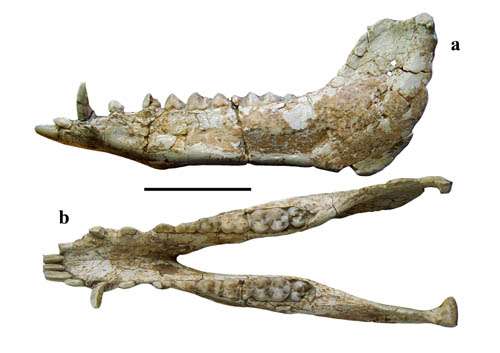New progress of the Neogene Suidae research

Dr. Hou Sukuan and Prof. Deng Tao from the Institute of Vertebrate Paleontology and Paleoanthropology(IVPP), Chinese Academy of Sciences reported a new species of Chleuastochoerus from the Linxia Basin, Gansu Province, China, and discussed the systematic position of the genus. Their latest research result was published online in the journal Zootaxa.
Chleuastochoerus is a small late Miocene-early Pliocene fossil pig from North Asia (mainly discovered from the upper Miocene "Hipparion Red Clays" of northern China). In general, this genus is characterized by the "supra-canine arch-niche" (a bony arch above the upper canine, with a niche in front of the upper canine to accommodate the lower canine when the mouth is closed), and the "pre-zygomatic plate" (a shelf-like expansion of the anterior end of the zygomatic arch). Most of the reported specimens were found from northern China since the genus Chleuastochoerus being erected by Pearson in 1928, and were included into a single species, C. stehlini; until Vislobokova reported a new genus, C. tuvensis, from the Asiatic Russia in 2009. The systematic position of Chleuastochoerus was only simply studied.
The new species (Chleuastochoerus linxiaensis) from the Linxia Basin is contemporary with the type species (C. stehlini), but bears longer facial region than in C. stehlini; more anteromedial-posterolaterally compressed upper canine; strong pre- and postprotocrista, "protoconule" and "metaconule," and lingual part of anterior and posterior cingula in P4; shorter trigonid, higher talonid, transversely arranged proto- and metaconid, and ridge-like ectoconid in p4; more pointed main cusps with deep and complex furrows of the cheek teeth; stronger anterior, posterior and buccal cingula in the upper molar.
Bearing both primitive tayassuid-like or palaeochoerid-like characters and some progressive character like in modern Suinae, the systematic position of Chleuastochoerus was highly controversial, which was assigned to either the subfamily Hyotheriinae or the subfamily Suinae. Now based on the traditional morphological study, the authors of this paper performed a cladistic analysis to re-study the phylogenetic relationships of Chleuastochoerus with respect to the other genus of the family Suidae. The matrix included 41 taxa and 133 morphological characters, and the final result support to place Chleuastochoerus in the subfamily Hyotheriinae as a relatively basal taxa.
This work was supported by the National Natural Science Foundation of China, the Chinese Academy of Sciences, the State Key Laboratory of Palaeobiology and Stratigraphy (Nanjing Institute of Geology and Palaeontology, CAS), the Ministry of Science and Technology of China, and the Key Deployment Project of Institute of Vertebrate Paleontology and Paleoanthropology, Chinese Academy of Sciences.
-

Fig.3 Cladogram of Suoidea. Credit: HOU Sukuan -

Fig.2 Mandible of Chleuastochoerus linxiaensis. Credit: HOU Sukuan
Journal information: Zootaxa
Provided by Chinese Academy of Sciences























